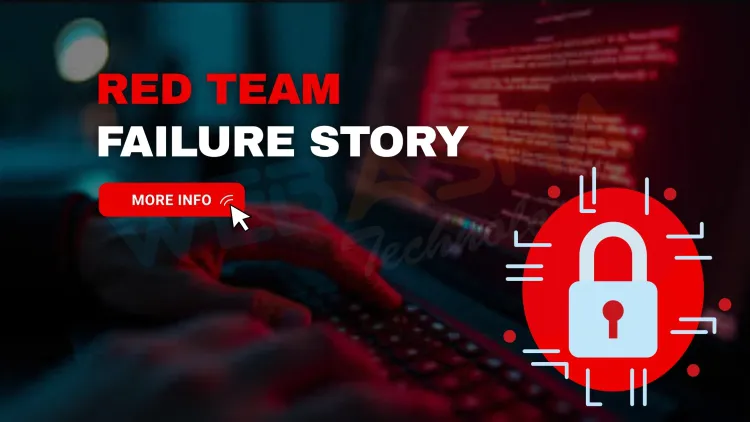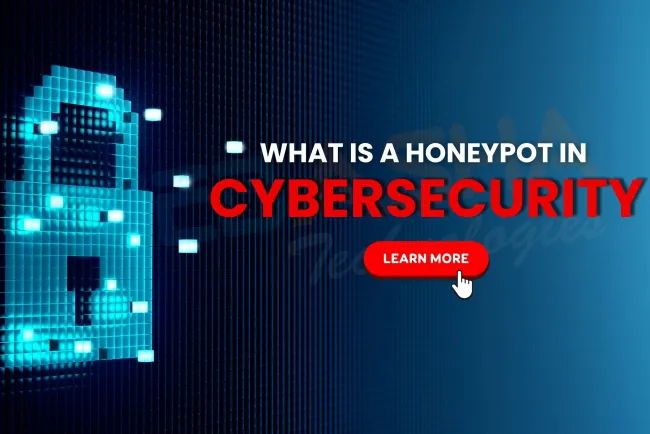How I Failed My First Red Team Engagement and What I Learned | The Detailed Guide
Discover the real story of a red teamer’s first failed engagement. Learn key lessons on stealth, reporting, coordination, and tools to boost your cybersecurity career and avoid rookie mistakes in ethical hacking.

Table of Contents
- Introduction: Every Red Teamer Has a First Mission
- What Is a Red Team Engagement?
- The Setup: My First Client Engagement
- Mistake #1: Skipping Detailed Recon
- Mistake #2: Poor Team Coordination
- Mistake #3: Overusing Noisy Tools
- Mistake #4: Lack of Evasion Techniques
- Mistake #5: Weak Reporting and Debrief
- The Takeaways: Red Teaming Is About More Than Hacking
- Tools I Now Use Differently
- Conclusion
- Ready to Start Your Red Teaming Journey?
- Frequently Asked Questions (FAQs)
Introduction: Every Red Teamer Has a First Mission
Every ethical hacker dreams of pulling off a flawless red team engagement—one that impresses clients, bypasses defenses, and uncovers critical vulnerabilities. But in reality, especially early in your career, failure is part of the process. My first red team engagement was far from perfect—it was a mix of technical stumbles, poor planning, and hard lessons. But that failure became the foundation of my cybersecurity growth.
In this blog, I’ll break down what went wrong, what I learned, and how you can avoid making the same mistakes.
What Is a Red Team Engagement?
Before diving into my failure story, here’s a quick recap. A red team engagement is a simulated cyber attack designed to test how well an organization can detect and respond to real-world threats. It often involves:
-
Reconnaissance
-
Initial Access
-
Persistence
-
Privilege Escalation
-
Lateral Movement
-
Data Exfiltration
Red teamers act like real adversaries, using stealth, deception, and real hacking tools.
The Setup: My First Client Engagement
Fresh out of training and OSCP-certified, I got a chance to lead a red team test for a mid-sized financial firm. I was confident. I had my toolkits ready—Cobalt Strike, Nmap, BloodHound, and Metasploit—and weeks of simulated labs under my belt.
What I didn’t have was real-world experience.
Mistake #1: Skipping Detailed Recon
I rushed into scanning internal IPs and ports without spending enough time on passive OSINT. I overlooked external assets like forgotten subdomains, legacy portals, and shadow IT infrastructure.
Lesson Learned:
Good recon wins battles. Now, I spend at least 30% of my engagement on information gathering using tools like:
-
Shodan
-
FOCA
-
TheHarvester
-
SpiderFoot
Mistake #2: Poor Team Coordination
While I was busy exploiting SMB vulnerabilities, my teammate was brute-forcing web portals—duplicating efforts. We hadn’t aligned our tactics, goals, or timelines.
Lesson Learned:
Clear Red Team playbooks and daily stand-ups are crucial. Communication tools like Mattermost or even a shared OneNote can prevent chaos.
Mistake #3: Overusing Noisy Tools
I got detected quickly. Why? Because I was using automated tools like Nessus and Metasploit on live production without rate limiting. The company’s EDR flagged everything within hours.
Lesson Learned:
Use custom payloads, living-off-the-land binaries (LOLBins), and manual enumeration. Never underestimate a good SIEM tool waiting to catch your signature.
Mistake #4: Lack of Evasion Techniques
My payloads were flagged instantly by antivirus software. I didn’t know how to encode, encrypt, or obfuscate them well enough.
Lesson Learned:
Red teaming isn’t just about hacking—it’s about stealth. I learned to use:
-
Shellter
-
Veil
-
Obfuscated PowerShell scripts
-
DNS tunneling
Mistake #5: Weak Reporting and Debrief
The final report was where my team truly failed. We submitted logs, screenshots, and jargon—without clearly explaining impact or business risk. The CISO wasn’t impressed.
Lesson Learned:
The value of red teaming lies in the report. Use MITRE ATT&CK mapping, show how the threat impacts business operations, and include remediation tips.
The Takeaways: Red Teaming Is About More Than Hacking
After that failed engagement, I went back and:
-
Studied the MITRE ATT&CK framework
-
Practiced low-and-slow attacks in lab environments
-
Focused on soft skills like communication and reporting
-
Learned to think like a defender to avoid their traps
Tools I Now Use Differently
| Tool | Then (First Attempt) | Now (Post-Failure Strategy) |
|---|---|---|
| Nmap | Aggressive scanning | Stealth scans, slow timing |
| Metasploit | Default payloads | Custom, encrypted payloads |
| BloodHound | Ran without analysis | Targeted graph queries |
| Cobalt Strike | Heavy beacon traffic | Low-profile beaconing, sleep intervals |
| PowerShell | Plain commands | Obfuscated scripts, AMSI bypasses |
Conclusion: Failure Is the Best Red Team Instructor
That engagement humbled me. It was embarrassing—but it taught me more than any course or certification ever could. If you're an aspiring red teamer, don’t fear failure. Embrace it, document it, and improve.
Red teaming isn’t about winning every time—it’s about learning, adapting, and evolving into a smarter adversary.
Ready to Start Your Red Teaming Journey?
If you want hands-on training, real-world labs, and Red Team frameworks like MITRE ATT&CK integrated into your learning, join our WebAsha Technologies. From beginners to advanced attackers, our curriculum ensures you’re battle-ready.
FAQs
What is a red team engagement?
A red team engagement is a simulated cyberattack to assess an organization's detection and response capabilities using real-world adversarial tactics.
How is red teaming different from penetration testing?
Penetration testing checks for vulnerabilities, while red teaming focuses on stealth and simulating real attacks to test detection and response.
Why do beginners often fail in red team engagements?
Beginners often fail due to poor recon, lack of stealth, noisy tools, weak coordination, and ineffective reporting.
What was the biggest mistake in your first red team test?
The biggest mistake was overusing automated tools, which triggered alerts and led to early detection.
What should you do before starting a red team engagement?
Conduct thorough reconnaissance, align team strategy, define goals, and prepare stealthy tools and evasion techniques.
How can poor reconnaissance affect red teaming?
Without strong recon, you miss hidden assets, weaken attack plans, and waste valuable time on low-impact vectors.
Which tools were misused in the failed engagement?
Metasploit, Nessus, BloodHound, and Nmap were used too aggressively without stealth, triggering detection systems.
Why is stealth important in red teaming?
Stealth ensures the red team can operate without being flagged, helping test real detection capabilities of defenders.
What is MITRE ATT&CK and why is it used in red teaming?
MITRE ATT&CK is a framework mapping real-world attack tactics. It helps structure red team reports and scenarios.
How should you report red team findings?
Use clear visuals, MITRE mapping, business impact summaries, and actionable remediation steps for non-technical stakeholders.
What is the role of communication in red teaming?
Strong communication avoids redundant efforts, aligns tactics, and ensures all operators stay on strategy.
What’s the best way to bypass antivirus as a red teamer?
Use obfuscation, encryption, custom payloads, and low-signature techniques to avoid antivirus detection.
How do EDR systems catch red team activity?
EDRs detect anomalies in traffic, behavior, signatures, and memory usage, especially from unmodified tools or scripts.
Can you use Metasploit in a red team engagement?
Yes, but use it with caution. Default payloads are noisy; always modify and encrypt them to avoid alerts.
What is lateral movement in red teaming?
Lateral movement refers to pivoting from one compromised system to others within a network to access critical assets.
What are common red teaming tools for beginners?
Tools include Nmap, BloodHound, Cobalt Strike, SharpHound, PowerShell, and custom scripts.
How can beginners practice red teaming?
Use lab platforms like TryHackMe, Hack The Box, or simulate engagements in home labs with Active Directory.
What are some evasion techniques every red teamer should know?
Learn AMSI bypass, PowerShell obfuscation, process injection, DLL sideloading, and traffic obfuscation.
How long does it take to become a red teamer?
With focused training and practice, 6–12 months is realistic to go from beginner to entry-level red teamer.
What certifications help in red teaming?
OSCP, CRTO, PNPT, and Red Team Ops are some valuable certifications for aspiring red teamers.
Is failure common in early red team careers?
Yes, failure is normal. It teaches vital skills, sharpens thinking, and prepares you for more complex scenarios.
How do you measure success in red teaming?
Success is measured by the quality of findings, stealth, impact, and how well you help the organization improve.
What is a red team playbook?
A red team playbook defines attack sequences, tools, techniques, timelines, and objectives to coordinate actions.
How can you avoid noisy scanning in red teaming?
Use slow scan rates, custom scripts, and passive recon techniques to reduce detection risk.
Why is documentation critical in red team tests?
Good documentation helps in debriefs, proves findings, and shows business impact clearly to decision-makers.
Can a red team engagement fail completely?
Yes, if detection is too fast or objectives aren’t met. But it can still offer valuable learning and improvements.
What are stealth techniques used in Cobalt Strike?
Use sleep intervals, encrypted beacons, HTTPS traffic, and user-agent spoofing to avoid detection.
What is the role of blue team during a red team test?
The blue team detects, analyzes, and responds to red team activity, simulating a live cybersecurity incident.
What should you do after a failed red team engagement?
Analyze mistakes, review reports, rebuild better tactics, and focus on skill gaps through training or mentorship.
Why are soft skills important in red teaming?
Because red teamers must communicate findings clearly, align with business goals, and collaborate with clients.














![Top 10 Ethical Hackers in the World [2025]](https://www.webasha.com/blog/uploads/images/202408/image_100x75_66c2f983c207b.webp)








